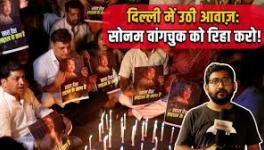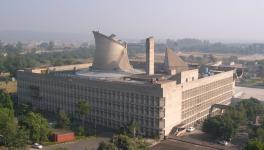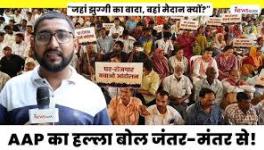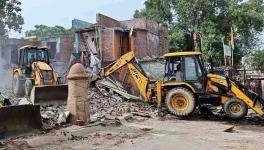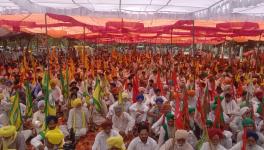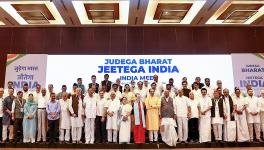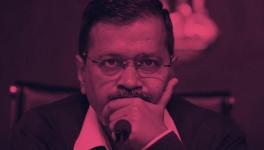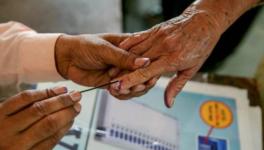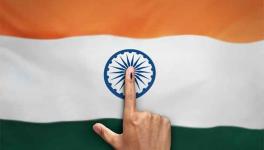Underfunding Killing Punjabi University: Students, Teachers
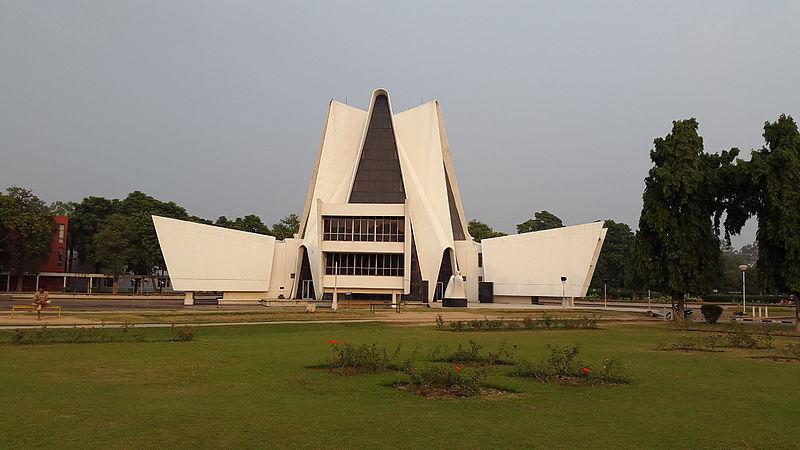
Punjabi University. Image Courtesy: Wikimedia Commons
“I was the only girl student from my village who enrolled in the university four years ago to pursue her dreams. I am still the only one. Someday, other girls will join the university too. If this university is shut or privatised, it will dash the hopes of aspiring girls,” says Sandeep Kaur.
It summarises the struggle of students, employees and teachers to save Patiala’s Punjabi University, reeling under a debt of Rs 150 crore. The students, employees and teachers have been protesting to demand recurring grants from the Punjab government for the last 36 days.
Established in 1962, Punjabi University is the largest university in Punjab, having students from more than 10 districts in the Malwa region. It’s also the second oldest university in the world, named after any language after Israel’s Hebrew University in 1925.
The agitation on the campus began after state finance minister Harpal Singh Cheema reduced the allocation from Rs 200 crore in the 2022-23 year to Rs 164 crore in the latest Budget. Vice-chancellor (V-C) Arvind termed it a “cruel joke,” saying it is “insufficient” to pay the salaries and pensions of teachers and non-teaching staff.
“The university has been braving a financial crisis for some years after declining to follow the neoliberal policy, which advocated consistent fees hike over the years. The salary bill amounted to Rs 468 crore plus Rs 100 crore spent on electricity, water and other expenses. So, we have a budget of Rs 575 crore to run the university,” he said in his address.
However, stakeholders maintain that funding started declining in 1991 when the PV Narasimha Rao government embraced privatisation, globalisation and liberalisation. The dependence on student fees to pay salaries and maintain infrastructure resulted in the collapse of academics with the university unable to hire teachers and staff for research.
According to Kaur, girls comprise 70% of students and are the worst underfunding sufferers. “I can cite several examples where girls were asked to share hostel rooms with double capacity,” she tells Newsclick.
“The BR Ambedkar Hostel is one of the oldest and desperately needs renovation. Students complained about ceiling cement falling on them but were told that the university lacks funds,” she added.
The situation is so worse that professors have volunteered to take free classes. Similarly, research students teach undergraduate and postgraduate students, Kaur further added.
Amrit Pal, a PhD scholar in public administration, says, “My department has only two professors. When I joined the department, it had five professors. One died and one left for abroad. Meanwhile, master’s programmes in public policy and human rights were introduced. The strength of teachers and the infrastructure remains same whereas the number of students has increased and PhD seats reduced.”
A student who qualifies for a junior research fellowship is expected to assist a teacher, but he takes classes, conducts exams, checks copies and uploads marks.
“Where’s research in it? Even a basic journal like Economic and Political Weekly is unavailable in the library. The labs lack apparatuses. Students go to other colleges to conduct basic tests. Research was supposed to flourish at the university but has become a nightmare due to no funds,” Pal adds.
Rahul Kumar, a philosophy PhD scholar, says that research has been severely affected with proper meals and washrooms becoming student priorities.
“Philosophy prospers on discussion and debate. How will you discuss and debate when juniors complain about drinking water, meals and other facilities? I think student organisations can contribute to bringing people new ideas, but much of the time and energy is lost in solving trivial issues,” he adds.
When asked about the Centre’s insistence on endowment-based funds to run the university and the pressure on state governments to imitate it, Kaur says, “If governments have the will to do something, it can be done. If the governments have crores for advertisements and publicity, they can also shell out some money for higher education.”
Pal agrees to the difficulty of their struggle but “it must continue”. “Farmer unions were also told that the fight against the three farm bills was difficult but a consistent struggle led to victory. Someone has to argue that education includes both primary and higher education. We met college students in Malwa over the issue and the response was overwhelming. We will also go to villages if the government does not fulfil our demand.”
Balwinder Singh Tiwana, a former economics professor at the university and a key team member demanding grants, alleges successive governments since 1991 destroyed higher education.
“The Punjab government allocated Rs 15.15 crore when the salary bill was Rs 12.10 crore in 1991—Rs 3 crore more than the required sum. The fee contribution was Rs 1.69 crore, 9% of the Budget. From 1998 onwards, the government started reducing funding to universities by 10% every year. In 2003-04, universities started facing financial distress and pushed for increasing fees,” Tiwana tells Newsclick.
Then-V-C Swaran Singh Boparai was advised to set up an engineering college that could fill the funding gap through fees. The university took a loan of Rs 48 crore for which an escrow account was opened. Instalments were being paid from fees but students started migrating to Canada and other countries in 2010-11.
Subsequently, the university took another loan of Rs 16 crore for the engineering college. V-Cs pushed governments for one-time grants. The situation worsened so much that grants, 88% of the total expense in 1991, came down to 21% in 2010.
Other state universities are facing a similar situation despite increasing their fees. Amritsar’s Guru Nanak Dev University has a debt of Rs 653 crore. Most courses have high fees, which weren't increased because of student protests.
When asked about the Punjab government’s argument that it has a debt of around Rs 3 lakh crore, Tiwana says, “The Aam Aadmi Party (AAP) was aware of it but still promised voters of the state’s complete makeover. It cannot run away from its promise.”
According to Tiwana, out of Rs 1,96,462 crore this fiscal, the AAP has allocated only Rs 1,015 crore for higher education, only 0.51% of the Budget.”
When students, teachers and employees resisted, “the government released Rs 90 crore for three months. However, the amount appears to be part of the total allocation of Rs 164 crore. Ministers should address us if the government has released the money as per demand. Something is very fishy here”, he added.
“We want a higher education policy where the state government should clearly state its role, contribution, and other measures.”
Vice Chancellor, Arvind, expects grants totalling Rs 360 crore. “The government is legally bound to release grants. It will be clearer when the next tranche of grants arrives.”
Get the latest reports & analysis with people's perspective on Protests, movements & deep analytical videos, discussions of the current affairs in your Telegram app. Subscribe to NewsClick's Telegram channel & get Real-Time updates on stories, as they get published on our website.









